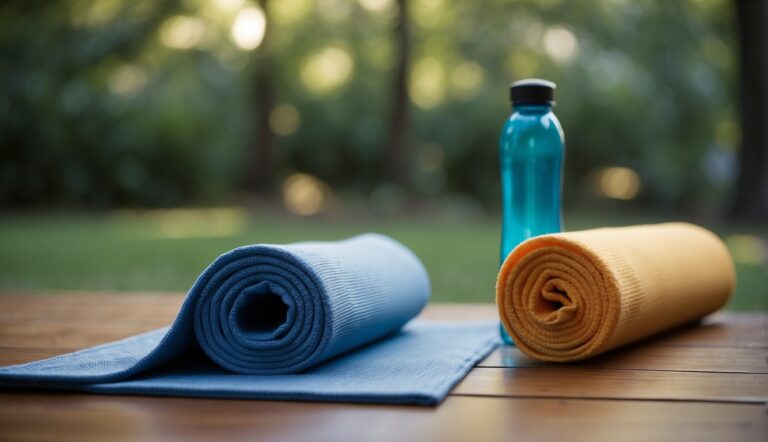The Most Important Cross-Training Exercises for Optimal Trail Running Performance
As a UESCA certified running coach, my experience with trail running has taught me the critical role that cross-training plays in improving running performance. Incorporating various forms of exercise beyond the trails is essential for trail runners looking to enhance endurance, strength, and overall athleticism. Cross-training allows for targeted conditioning of muscle groups that are not as heavily engaged during running, providing a broader foundation for the physical demands of trail running.
Traditionally, trail runners have relied on the sport itself to get in shape. However, engaging in activities like cycling, swimming, and resistance training can lead to significant benefits. These cross-training methods build cardiovascular strength while also reducing the risk of overuse injuries. They can improve muscle balance and running economy, making every stride more efficient on the trail. My personal recommendation and practice involve integrating a mix of low-impact and resistance exercises into weekly routines, ensuring a well-rounded training program that addresses the unique challenges of trail running.
Fundamentals of Cross-Training for Trail Runners
As a UESCA certified running coach, I emphasize that cross-training is essential to boost running performance and prevent injuries. It complements trail running by enhancing endurance, strength, and balance.
Benefits of Cross-Training
Endurance: By engaging in various aerobic cross-training activities like cycling or swimming, trail runners can increase their maximal oxygen consumption. This is critical to maintaining a strong pace over long distances.
Strength and Balance: Incorporating resistance training and exercises such as plyometrics can significantly improve muscle strength and joint stability. This is essential for tackling the uneven terrain encountered in trail running.
Injury Prevention: Regular cross-training can reduce the risk of injury. Activities with lower impact forces, like elliptical workouts, give the body a break from the repetitive strain of running, which is crucial for long-term joint health.
Key Cross-Training Disciplines
- Elliptical Training: Mimics running motion with less impact, aiding in recovery while maintaining cardiovascular fitness.
- Cycling: Offers a high-intensity aerobic workout that can improve leg strength and endurance without the pounding on joints.
- Swimming: Builds endurance and provides a total body workout that can aid in muscle recovery due to its low-impact nature.
- Strength Training: Focuses on targeted muscle groups that support running mechanics, including core stability, which is vital for trail runners.
- Plyometrics: Improves power, speed, and neuromuscular coordination, translating to more efficient and robust running on trails.
- Yoga and Pilates: Enhances flexibility, core strength, and balance, which contribute to a runner’s agility and injury prevention efforts.
| Discipline | Focus Area | Benefit to Trail Running |
|---|---|---|
| Elliptical | Cardiovascular | Low-impact alternative to maintain fitness |
| Cycling | Leg Strength | Non-impact endurance and strength building |
| Swimming | Total Body Workout | Recovery and endurance without joint stress |
| Strength Training | Muscle Development | Supports running mechanics, prevents imbalances |
| Plyometrics | Explosive Power | Boosts efficiency, improves trail running economy |
| Yoga & Pilates | Flexibility | Strengthens core, improves balance and agility |
As a coach, I ensure my athletes engage in these cross-training disciplines to enhance their trail running capability and resilience.
Strength and Conditioning for Trail Running
I recognize the importance of dedicated strength and conditioning routines in enhancing trail running performance and reducing injury risks. Focusing on core strength, lower body workouts, and upper body training builds a solid foundation for the varied and unpredictable terrain trail runners face. Here are specific exercises to include in your training regimen.
Core Strength Exercises
Your core is critical for stability and balance on the trails. A strong core prevents muscle imbalances that can lead to injuries.
- Planks: Hold for 30 seconds to 1 minute, keeping your body straight and core engaged.
- Russian Twists: Perform with a medicine ball for added resistance, 15-20 reps per side.
Lower Body Workouts
Trail running requires powerful legs to navigate the uneven ground. Focus on muscle groups crucial for climbing and descending.
- Squats: 3 sets of 10-15 reps; add weight to increase difficulty as needed.
- Lunges: Strengthen your quads, hamstrings, and glutes. Aim for 3 sets of 12 reps on each leg.
Upper Body Training
A strong upper body aids in overall stability and improves running form, especially on challenging trails.
- Push-Ups: Start with 3 sets of 10 reps and increase the count as your strength improves.
- Pull-Ups: Essential for a well-rounded upper body routine, perform 3 sets to failure.
By integrating these targeted exercises into your training, you’ll develop the strength necessary to tackle trail running‘s unique challenges.
Building Better Balance and Coordination

Balance and coordination are critical for trail runners to maintain form and avoid overuse injuries. Focusing on dynamic balance exercises and proprioceptive training can enhance agility, muscle strength, and functional movement on uneven terrain.
Dynamic Balance Exercises
I recommend incorporating movements that replicate the unpredictable nature of trails. Here’s a table of dynamic balance exercises designed to improve stability and coordination:
| Exercise | Description | Benefit |
|---|---|---|
| Single-Leg Deadlifts | Stand on one leg, hinge at the waist, extend other leg behind | Strengthens muscles, improves form |
| Lateral Bounds | Jump from side to side, landing on one foot | Enhances side-to-side agility |
| Bosu Ball Squats | Perform squats on an unstable Bosu ball | Challenges balance, strengthens legs |
| Plyometric Jump Training | Short bursts of jumping exercises | Improves explosive power, agility |
Incorporate these exercises into your training regimen 2-3 times a week, focusing on maintaining proper form throughout.
Proprioceptive Training Techniques
Proprioceptive training sharpens the body’s ability to sense movement and position, which is vital on uneven trails. Here are effective techniques:
| Technique | Description | Benefit |
|---|---|---|
| Balance on an unstable surface | Practice standing on a cushion or balance board | Increases muscle response and coordination |
| Closed-Eye Balance | Stand on one leg with eyes closed | Enhances proprioceptive abilities |
Perform these techniques regularly, progressing difficulty as your skill improves, to bolster your functional movement and reduce the likelihood of injuries due to missteps on the trails.
Aerobic Cross-Training Modalities
When preparing for trail running, incorporating various aerobic cross-training modalities can enhance cardiovascular endurance and minimize the risk of injury.
Low-Impact Cardio Options
I often recommend cycling and swimming as excellent low-impact cardio options for trail runners. These activities maintain aerobic fitness while reducing the stress on joints and muscles.
Cycling: It’s beneficial for building leg strength and endurance. Aim for sessions that simulate the intensity of trail runs, focusing on steady climbs and interval bursts.
- Session Example:
- 20 minutes warm-up
- 40 minutes at moderate intensity with hill climbs
- 10 minutes cool down
Swimming: This full-body workout improves cardiovascular health without the impact of running, offering a restorative session for the body.
- Key Benefits:
- Low-impact on joints
- Enhances lung capacity
- Builds upper body strength
High-Intensity Interval Training
High-Intensity Interval Training (HIIT) is powerful for enhancing aerobic capacity, and it can be adapted across various cross-training activities like biking or using an elliptical.
Biking HIIT Session: Alternate between intense sprints and active recovery to stimulate the cardiovascular system, similar to trail running’s varied pace.
- Interval Structure:
- 5 minutes warm-up
- 30 seconds high-intensity sprint
- 1 minute moderate-intensity recovery
- Repeat intervals for 20 minutes
- 5 minutes cool down
Elliptical HIIT Session: Can mirror trail running movements and provides a comprehensive aerobic workout with adjustable resistance.
- Interval Structure:
- 5 minutes warm-up
- 2 minutes at high intensity
- 1 minute at low intensity
- Repeat intervals for 15-20 minutes
- 5 minutes cool down
Incorporating a variety of cross-training activities ensures a well-rounded aerobic foundation for trail running. Cycling, swimming, and HIIT are powerful tools for maintaining heart health and aerobic fitness.
Flexibility and Recovery Strategies
Flexibility and muscle recovery are critical components of a trail runner’s training regimen. I focus on incorporating stretching regimens and active recovery methods into my training plans to reduce injury risk and enhance performance.
Stretching Regimens
My approach to improving flexibility involves consistent stretching regimens. I emphasize post-run stretching to target key muscle groups that are engaged during trail running. Here’s a table outlining a basic stretching routine I recommend:
| Muscle Group | Stretch | Duration |
|---|---|---|
| Calves | Downward Dog | 30 seconds per leg |
| Hamstrings | Standing Hamstring Stretch | 30 seconds per leg |
| Quads | Standing Quad Stretch | 30 seconds per leg |
| Hip Flexors | Lunging Hip Flexor Stretch | 30 seconds per leg |
It’s important to hold each stretch for at least 30 seconds to effectively lengthen the muscle fibers without causing strain.
Active Recovery Methods
Active recovery methods are equally vital. I advocate for incorporating activities such as yoga and recovery runs, scheduled on rest days or after intense workouts. These activities help maintain blood flow, promoting muscle recovery while minimizing stiffness:
- Yoga sequences tailored for runners focus on flexibility and core strength, aiding in injury prevention.
- Recovery runs should be low intensity, keeping the heart rate in a comfortable zone to facilitate blood circulation and muscle repair.
In my experience, a balance between rest and gentle movement expedites the recovery process, ensuring my muscles are well-prepared for the next trail run.
Integration and Routine Development

Integrating cross-training effectively requires both a sound program and attention to training cycles. My aim is to guide you to develop a routine that complements trail running, while considering training specificity and the necessary periodization.
Designing a Cross-Training Program
When creating a cross-training program, specificity and progression are my main focuses. Initially, I assess the runner’s strengths and weaknesses to ensure that cross-training addresses specific needs.
- Strength Training: Include movements that mimic trail running’s demands—squats and lunges for power on ascents, and plyometrics for downhill stability.
- Low-Impact Activities: Elliptical, swimming, or cycling to boost cardiovascular fitness without additional strain on the joints.
- Mental Training: Visualization and breathing exercises to prepare mentally for race conditions.
A routine might look like this:
- Monday: Strength training (45 minutes)
- Wednesday: Low-impact activity (30 minutes)
- Friday: Mental training exercises (20 minutes)
This approach ensures a rounded development across physical and mental facets, with minimal risk of overuse injuries.
Periodization and Training Cycles
Periodization is essential for maximizing the benefits of cross-training. I segment the training volume and intensity into cycles that align with the runner’s race schedule.
- Base Phase: Emphasize building aerobic capacity and endurance with increased volume of low-impact activities.
- Build Phase: Focus on higher intensity and race-specific strength training.
- Peak Phase: Sharpen with targeted workouts that mimic race demands, reducing volume to prevent fatigue.
- Taper Phase: Scale back intensity and volume to ensure the runner is rested for race day.
My advice is tailored to each runner’s individual needs, factoring in recovery, life stressors, and their physical adaptation to the training load. Periodization prevents staleness and overtraining, paving the way for peak performance when it counts.






